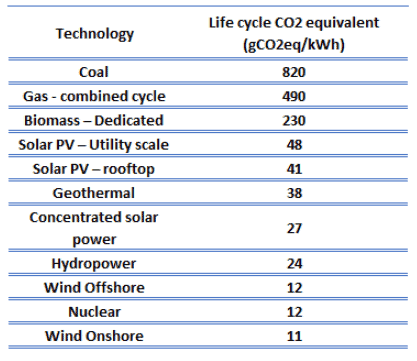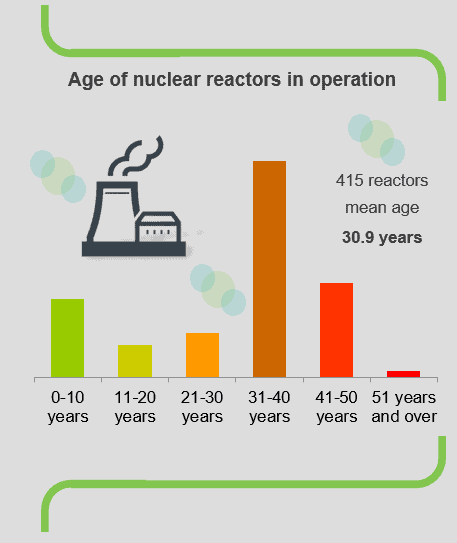Current Nuclear Energy – to phase-out or to continue?
Taking out existing nuclear power plants destroys gains with renewables such as wind, biomass, and solar power.
We have to make a final decision on the phase-out of the current nuclear. Indecision can cost us a lot. At present, nuclear energy has been declining for thirty years, and educational capacities and supply chains are in line with this.
The carbon footprint of nuclear energy is equivalent to wind, less than solar, and, orders of magnitude, less than coal. Nuclear power plants take up far less space on the landscape than solar or wind farms, producing power at night or on calm days.
To accomplish the goal of decarbonizing, at a minimum, we need to maintain the 10 percent of our power needs that nuclear currently provides. When you consider the nuclear build cycle and how quickly the current fleet will expire, you realize that if we don’t act quickly, we’re going to miss the opportunity to maintain that 10 percent, let alone grow it.
 Losing these reactors would ultimately reduce the large-scale supply of affordable and dependable clean power and deplete the expertise, knowledge, and supply chain that goes along with the entire nuclear industry. Taking out existing nuclear power plants completely destroys gains with renewables such as wind, biomass, and solar power.
Losing these reactors would ultimately reduce the large-scale supply of affordable and dependable clean power and deplete the expertise, knowledge, and supply chain that goes along with the entire nuclear industry. Taking out existing nuclear power plants completely destroys gains with renewables such as wind, biomass, and solar power.
Today’s majority of nuclear plants are approaching the end of their design life, and only a few have been built in the last 20 years. For example, eighty-eight of America’s 93 reactors have received their first 20-year extension approval. Eleven reactors are already using research to apply for a second 20-year extension (operation up to 80 years).
This industry shows enormous inertia. It has been a commitment for many decades, and it is impossible to decide on a phase-out in one year and a return to nuclear energy in five years. Unfortunately, this is happening today, and operators do not know whether to invest in upgrading existing reactors or not. Like when you have an old car and want to keep it running, you must invest in it. Indecision can cost you a lot. At present, nuclear energy has been declining for thirty years, and educational capacities and supply chains are in line with this.
Nuclear energy as a controllable large-scale source
Nuclear energy is one of the few sustainable primary sources. It is the only controllable large-scale source that could complement variable renewable sources (wind and solar power), ensuring reliable 24/7 energy under all circumstances, including weather extremes and emergencies. Nuclear power plants, biomass, and geothermal power plants, can follow the grid load to reduce the demands of variable renewables on the transmission and energy storage systems. But note that a typical reactor’s annual enriched uranium consumption is about 25 tonnes of enriched uranium. It corresponds to about 3,200,000 tons of coal burned in coal-fired power plants per year or about 5,000,000 tons of biomass burned in biomass-fired power plants per year. Considering that one pine weighs a ton, we are talking about 5,000,000 pines saved in one year. In 2019, nuclear power supplied 2,586 terawatt-hours (TWh) of electricity, equivalent to about 10% of global electricity generation, and was the second-largest low-carbon power source after hydroelectricity.
 In the absence of significant, successful new-build over many years, the average age (from grid connection) of operating nuclear power plants has been increasing since 1984, and as of mid‑2021, it is standing at 30.9 years, up from 30.7 years in mid-2020.
In the absence of significant, successful new-build over many years, the average age (from grid connection) of operating nuclear power plants has been increasing since 1984, and as of mid‑2021, it is standing at 30.9 years, up from 30.7 years in mid-2020.
In 1990, the average age of operating reactors in the world was 11.3 years. In 2000, it was 18.8 years and stood at 26.3 years by 2010. The leading nuclear nation is also leading the age pyramid. The U.S. passed the 40-year average age in 2020, and France’s fleet exceeds 35 years.
Taking out existing nuclear power plants completely destroys gains with renewables such as wind, biomass, and solar power.
For example, on October 13, in an open letter in the German daily newspaper Die Welt, experts warned that Germany risked “carbonizing its energy system by phasing out nuclear power” and missing its 2030 climate goals.
The MIT report found that the most cost-efficient, reliable grid will come from an energy mix in the next decade.
Source: MIT, The Future of Nuclear Energy in a Carbon-Constrained World